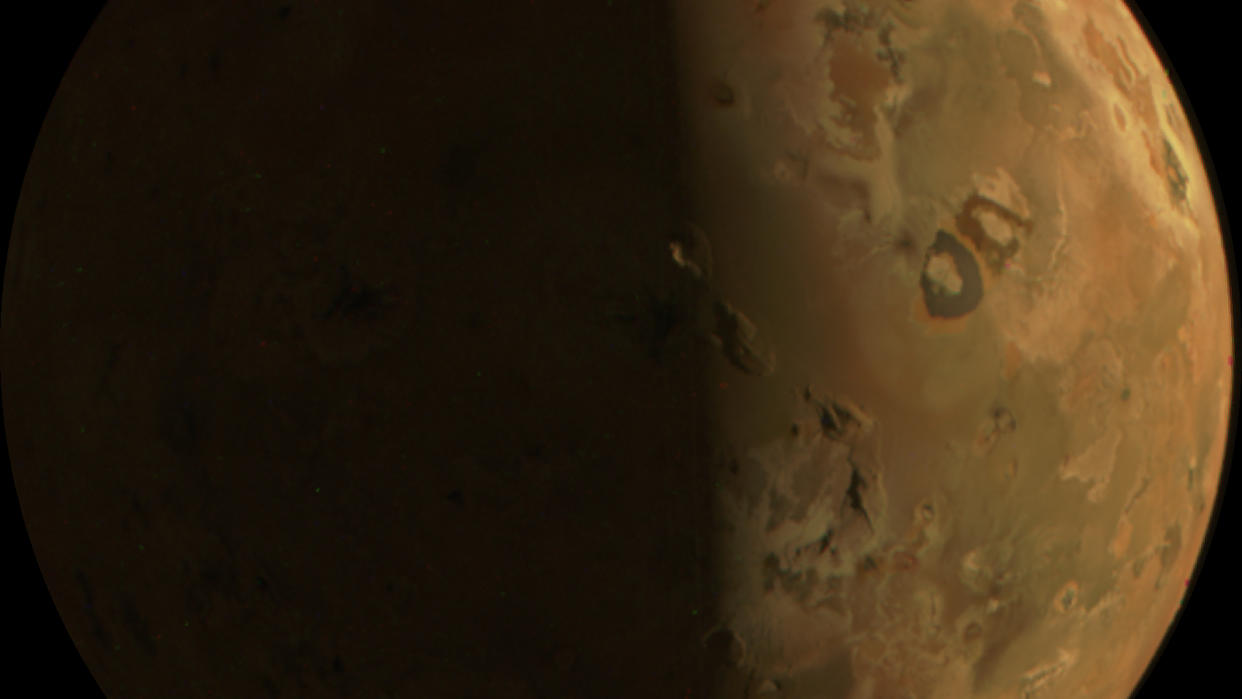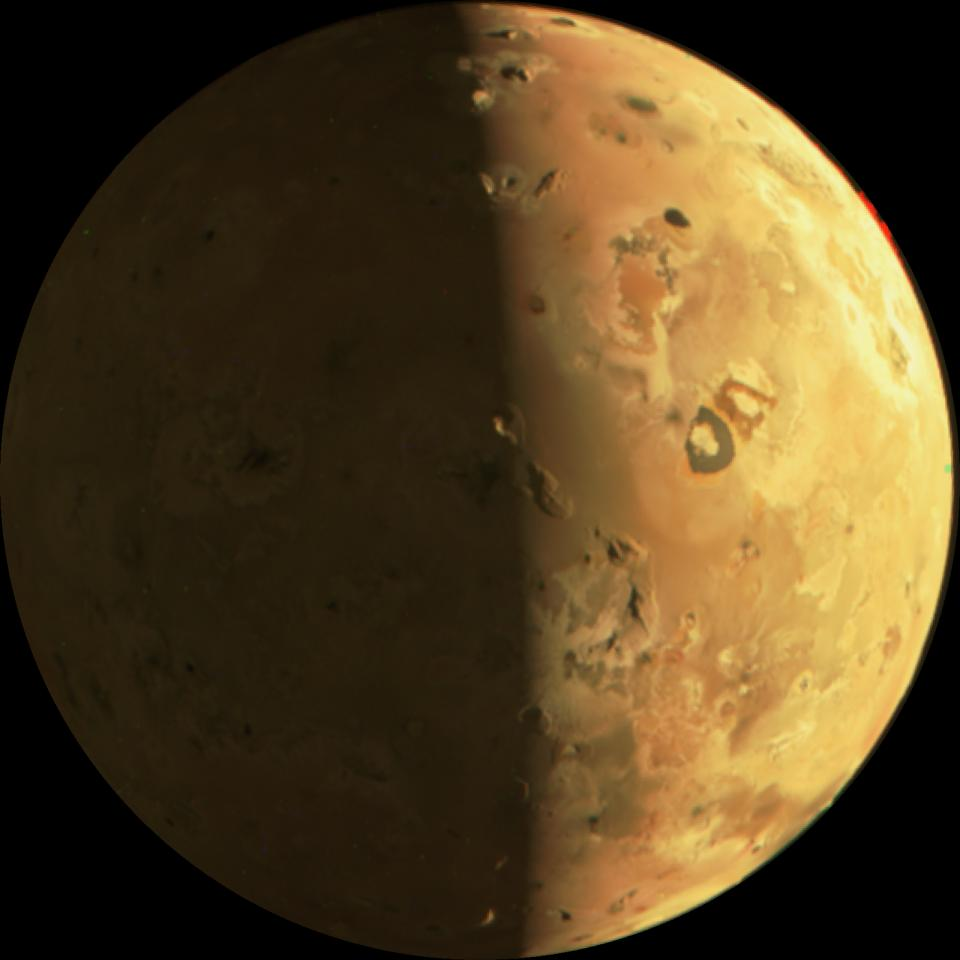Jupiter's volcanic moon Io looks outstanding in these close flyby photos from NASA's Juno probe

NASA's Juno spacecraft has now paid Jupiter's moon Io its second close-up visit in less than two Earth months.
To mark the rendezvous, NASA and the Southwest Research Institute released a new batch of images showing the infamously infernal moon in a state of seemingly uncharacteristic calm. Scientists also released a video showing Juno's gradual approach to the Jovian satellite — a sphere pockmarked with points of light from volcanic eruptions.
Juno launched in 2011 and entered orbit around Jupiter in 2016. Each orbit takes Juno on a highly elliptical loop, allowing it to tread closely around Jupiter's poles before circling farther away from the planet. The spacecraft's Jupiter-related task list was originally completed in 2021, but NASA extended the mission with an eye on exploring some of the world's larger moons.
Related: NASA Juno spacecraft reveals Jupiter's volcanic moon Io like never before in spectacular new images

Io is one of those moons. The spacecraft first passed within 930 miles (1,500 kilometers) of the moon in Dec. 2023, coming closer than any craft ever had, save for NASA's Galileo spacecraft in 2001. And, over the past several days, Juno managed to complete its 58th orbit, meaning the spacecraft has now taken a second pass at that distance.
Related Stories:
— Jupiter's moon Io is covered in active volcanoes. Now we have the 1st map of them
— Jupiter's Volcanic Moon Io May Not Have a Magma Ocean After All
— Jupiter's volcanic moon Io looks stunning in new Juno probe photos
Io has the misfortune of being an object in a great gravitational game, as both colossal Jupiter and its moon Europa pull at Io's interior and churn it into a hotbed of volcanic activity. But we don't quite know what this process actually looks like. Some scientists, for example, believe Io holds a global magma ocean beneath the surface. Others think that a superhot core of solid metal drives the volcanoes.
By using Juno to examine Io, Juno's scientists hope they can determine how exactly the planet and its volcanoes tick.
Juno's extended mission will now take it up to September 2025. If another extension is not in the cards, its operators will deorbit it into the gas giant's atmosphere.

